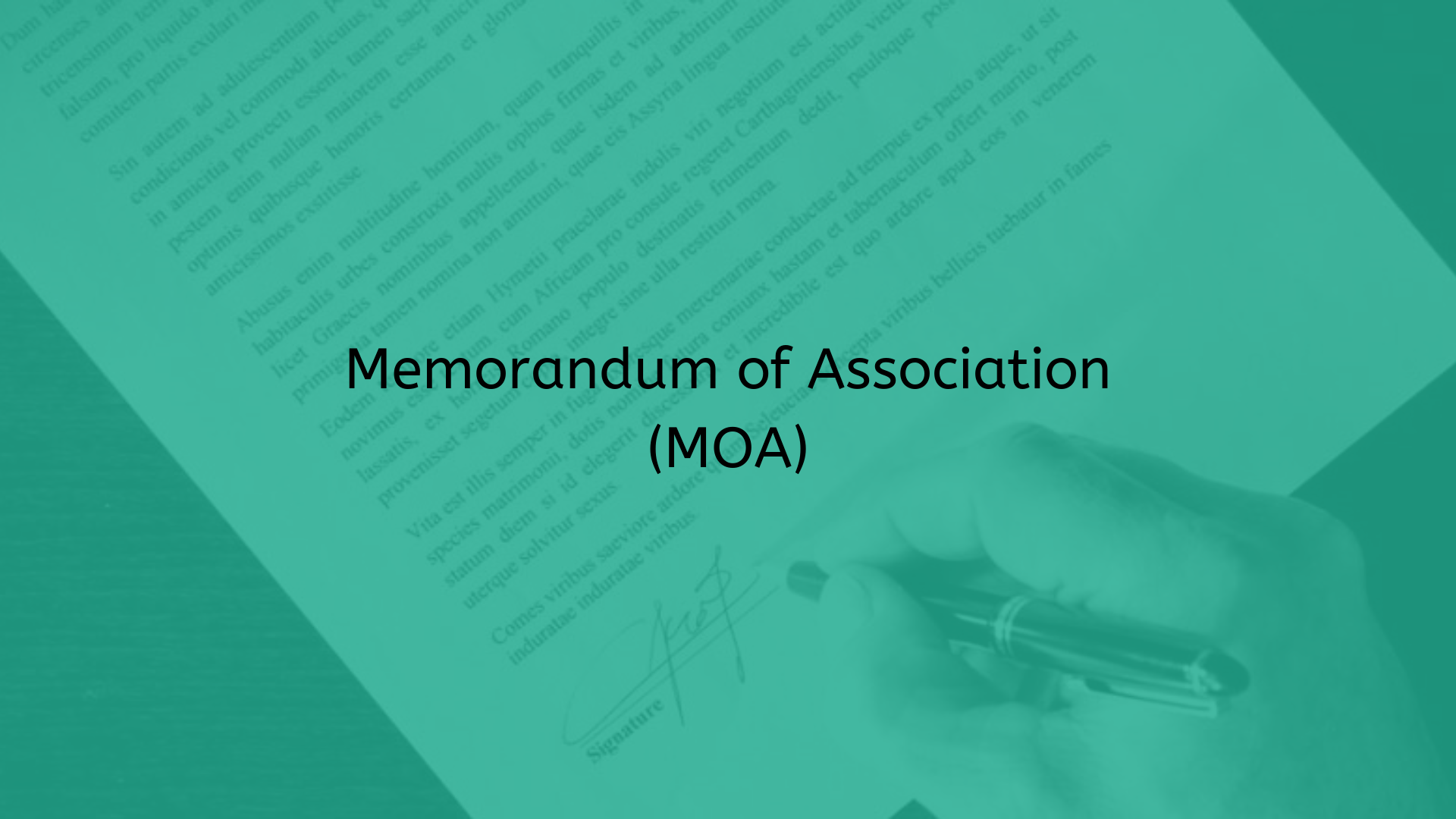The Memorandum of Association is a legal document that defines various clauses as per Schedule I of the Companies Act, 2013. Further, it is prepared at the time of incorporation of the company. Also, the company can amend it as and when required. In this article, we will talk about the Memorandum of Articles (MoA) and look at the various regulations that govern it.
What is the Memorandum of Association (MoA)?
According to Section 4 of the Companies Act, 2013, the MoA is a legal document specifying information about the shareholding of the company. It also outlines the scope of the company’s business activities. Further, it is prepared for the purpose of registering the company. It is also called the charter of the company. Most importantly, the MoA defines the relationship between the shareholders and the company. Since it states the company’s objectives, it is an important document. Finally, it specifies the powers of the company.
Forms of MoA
The MoA must be in forms specified in Tables A, B, C, D, and E in Schedule-I as applicable to the company.
TABLES:
- A– MoA of a company limited by shares.
- B– MoA of a company limited by guarantee. However, the company does not have any share capital.
- C– MoA of a company limited by guarantee. Also, the company has a share capital.
- D– MoA of an unlimited company. However, the company does not have any share capital.
- E– MoA of an unlimited company. Also, the company has a share capital.
Six Important Clauses of the Memorandum of Association
According to the Companies Act, 2013, the six mandatory and important clauses of the MoA are as follows:
1. Name Clause
Since a company is a legal entity, it needs an identity – a name. Under this clause, the company’s name cannot already be in use – it should be unique. Further, it’s good if it states the nature of the business activity of the Company. Also, it shall also state the type of company. Therefore, a private limited company must suffix ‘Private Limited’ at the end of the company name. Similarly, a public limited company must suffix ‘Limited’ and a One-Person Company must suffix ‘OPC’ at the end of the company name.
2. Location of the Registered Office Clause
Under this clause, the company must specify the State in which the registered office is situated. This is essential because it helps in determining the jurisdiction of the Registrar of Companies. Sometimes, the company does not specify the address at the time of incorporation. In such cases, the company must provide this information to the Registrar within 30 days from the date of incorporation. Further, the company shall file Form INC22 for the same.
3. Objects Clause
This clause helps in detailing the objectives of the company. Further, the objectives are divided into two sub-categories:
- Main Object
- Ancillary Objects
4. Liability Clause
The fourth clause mentions the liability of the members of the company. There are different categories of defining the liability of members:
- A company limited by guarantee– In this category, the liability of the members is limited up to the amount each member has agreed to contribute. There are two ways of making this contribution:
-
- Contributing to the assets of the company in the event of its being wound-up while he is a member. Also, contributing within one year after he ceases to be a member. Further, this contribution is for the payment of debts and liabilities of the company.
- Contributing to the costs, charges, and expenses of winding-up and for adjustment of the rights of the contributors among themselves.
-
- A company limited by shares– In this category, the liability of its members is limited to the amount unpaid, if any, on the shares that they hold.
- A Company with unlimited liability– In this category, the liability of the members is unlimited.
5. Capital Clause
The fifth clause states the company’s authorized capital. Authorized capital, in simple terms, is the maximum share capital of the company within which the company shall have its paid-up share capital. Further, it limits the number of shares that the company can issue. However, if the company wants to raise capital beyond this limit, then it can pass a resolution for an alteration of the MoA. Members of the company must pass this resolution for an increase in authorized capital. Also, the members need to alter the MoA after the resolution is passed.
6. Subscription Clause
The final clause states the purpose of the subscribers to incorporate the company. It also states the number of shares that the subscribers to the memorandum agree to subscribe to.
“In the case of One Person Company, the name of the person who in the event of the death of the subscriber shall become the member of the company shall also be specified therein”.
How to alter the MoA?
According to Section 13 of the Companies Act, 2013, a company can alter the provisions of its MoA through a special resolution and post-complying with the prescribed procedure. The sections detail the steps that the company must follow to make these alterations. The company needs to ensure that all such alterations are registered with the Registrar of Companies within 30 days of filing the special resolution. If the company fails to do the registration, then the alteration made will not have any effect.
Read about the difference between the Memorandum of Association and the Articles of Association.
Summing Up
We hope that this article offered better clarity about the Memorandum of Association. In case of any doubt, don’t hesitate to write to us.














